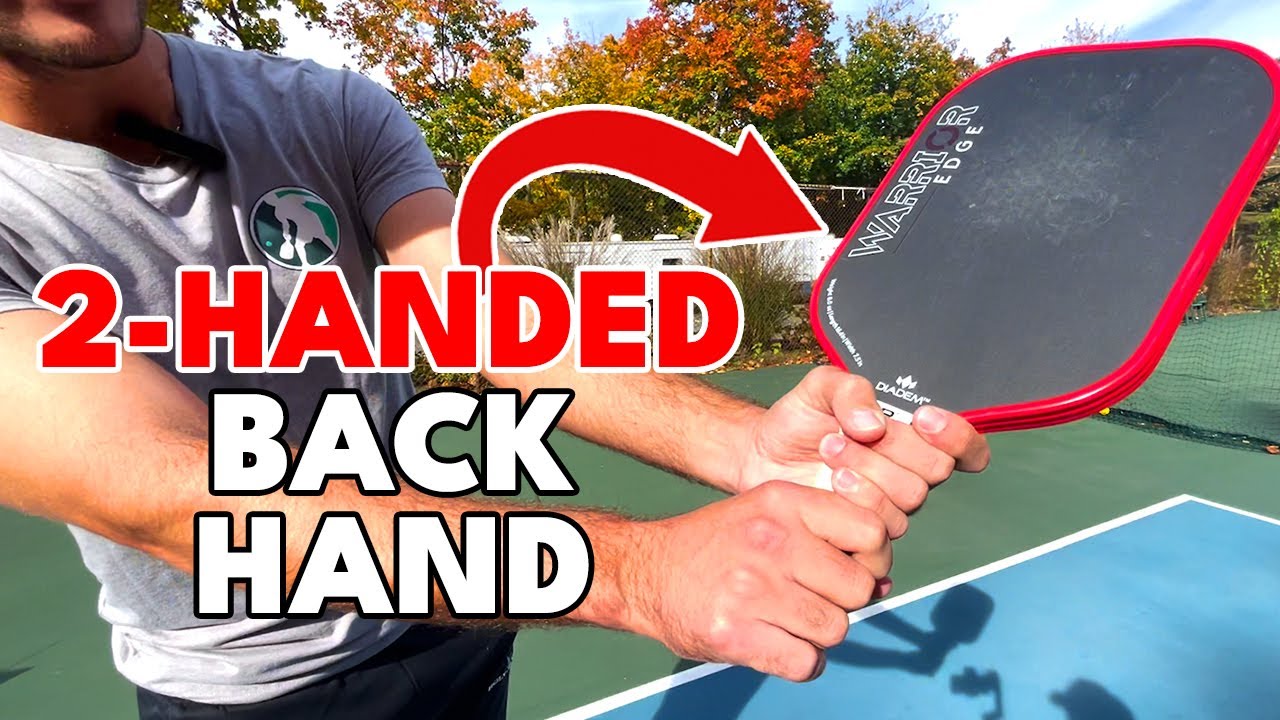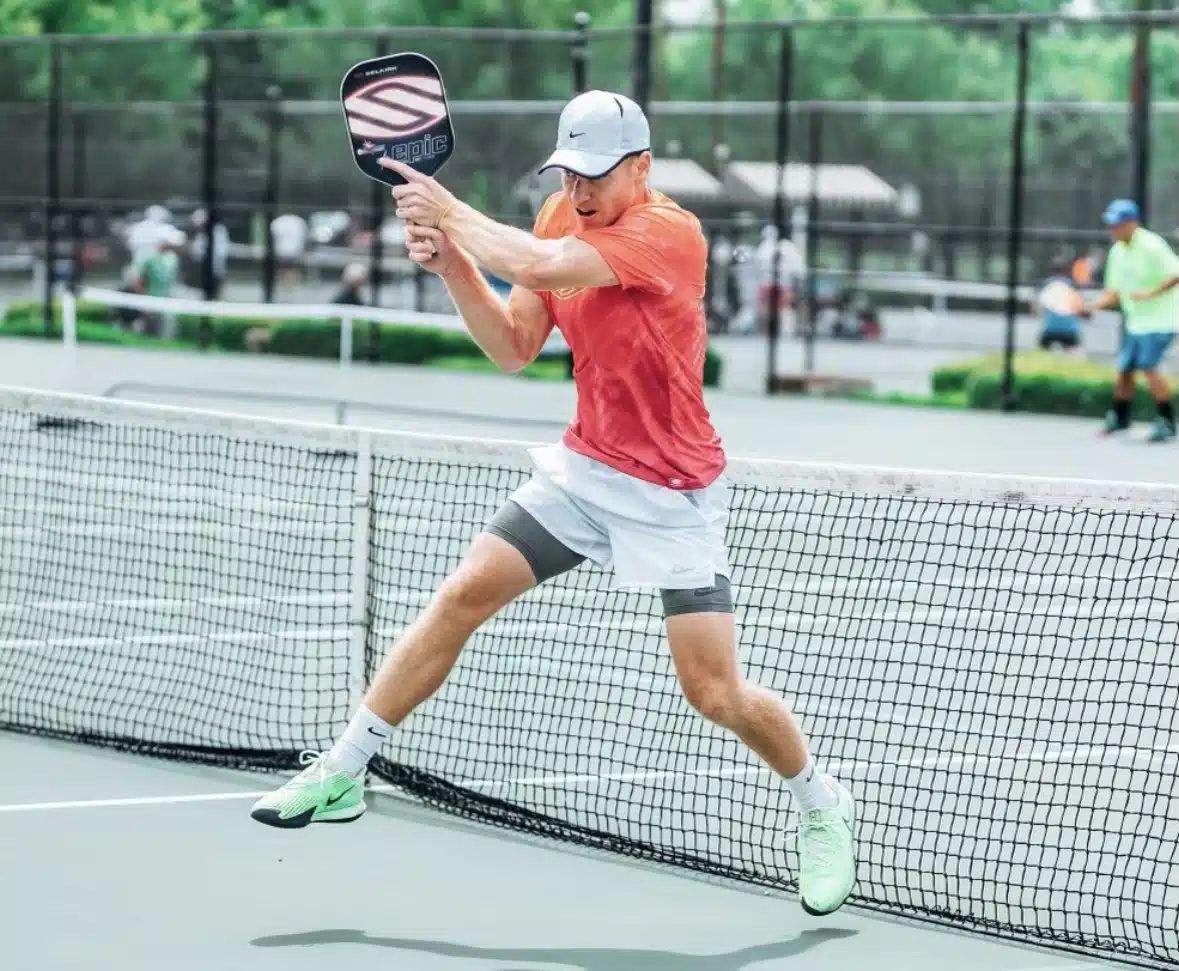Two-Handed Backhand Pickleball – A Comprehensive Guide
The two-handed backhand is more than just a shot in pickleball; it is a powerful tool that transforms the game for players of all skill levels. This technique offers not only enhanced power but also remarkable control, especially when addressing shots coming from challenging angles. As players engage with this style, they discover its versatility, allowing for seamless execution of various shots from dinks to volleys and aggressive drives. Embracing the two-handed backhand in Pickleball means diving into a world of possibilities where strategy and finesse harmonize, giving competitors an edge on the court. Whether you are a beginner or an experienced player, learning the mechanics of this backhand can significantly elevate your gameplay, enhance your confidence, and enable you to handle intense rallies with ease.
The Two-Handed Backhand Technique: Foundation for Success

Grip and stance: Setting up for a powerful two-handed backhand
The two-handed backhand begins with proper grip and stance, which lay the foundation for a successful execution. For the grip, employ the continental grip for your dominant hand, which feels as natural as shaking hands with the paddle. Your non-dominant hand should rest just below, fingers wrapped securely around the handle. This dual-hand approach allows for better stability and control as you prepare for the shot.
Next, your stance is equally significant. Set your feet shoulder-width apart, ensuring your dominant foot is slightly ahead. This positioning enables a balance that is crucial for effective swinging. Allow your body to face the net, but keep your shoulders open to facilitate the necessary hip movement. This configuration effectively preps your body to engage in a fluid and powerful backhand stroke, akin to a coiled spring ready to release its energy.
Swing path and paddle angle: Maximizing reach and control
Once in position, the swing path takes shape. Focus on a short and controlled backswing to keep momentum and timing in check. It is vital not to overswing; maintain a smooth motion that leads into the contact phase. Visualizing the paddle as a brush painting across the canvas can inspire a balanced and calm approach to the stroke.
When preparing to make contact, ensure your paddle angle is perpendicular to the ball’s trajectory as it approaches your body, ideally positioning yourself to hit it slightly in front of your dominant foot. This will optimize the power and control transferred through the shot. Returning to our canvas metaphor, each stroke should feel intentional, directed, and purposeful. The finesse can’t be ignored, as it is what distinguishes a casual player from a master of the two-handed backhand.
Footwork and movement: Reacting quickly and efficiently
Effective footwork is the unsung hero of the two-handed backhand. Being agile and responsive as the ball approaches can dictate the outcome of your shot. Quick steps, particularly with your non-dominant foot, pave the way for a balanced position. Picture a dancer gracefully shifting between movements precision and agility combined create a masterpiece.
To illustrate, let’s break down the footwork nuances:
- Quick Steps: As the ball approaches, take small, controlled steps to maintain balance and position.
- Stable Base: Keep your knees slightly bent, and your weight distributed evenly across your feet.
- Responsive Movement: Be ready to adjust your foot placement based on the ball’s trajectory, maintaining an active, readiness in your stance.
When orchestrating the footwork, strive to embody a springing energy, always prepared to react and return the ball with authority.
Strategic Advantages of the Two-Handed Backhand: Utilizing This Technique to Your Benefit

Reaching low shots: Mastering the technique for challenging returns
The two-handed backhand shines particularly when the ball dips low, presenting challenges often unmet by its one-handed counterpart. By utilizing a lower body stance and activating leg strength, players can confidently retrieve low shots that might seem unreachable. Imagine being a cat its agility and readiness to pounce on the slightest movement likewise, as you lower your center of gravity, your body becomes part of a spring system that launches you toward the incoming ball.
For example, many professional players swear by their two-handed backhand as a vital part of their arsenal when dealing with low balls. They have mastered the art of bending their knees and dropping their hips, allowing them to maintain balance while positioning their body to connect with the ball. This adaptability in execution allows players to dictate the game’s pace, challenging their opponents while enhancing their overall performance.
Adding power and depth: Generating offensive opportunities
Power in your backhand can significantly change the dynamics of play. With the two-handed technique, players can produce immense force that can push opponents back, creating offensive opportunities. The combined strength of both hands generates torque and acceleration, enabling more depth in every shot. This aspect is not merely physical; it’s psychological, instilling confidence and aggression in your gameplay.
When channeling this power, consider constructing shots that not only land but dominate. Players like the notable Ben Johns have exhibited unparalleled capabilities with their backhand strokes forcing opponents into defensive corners. Use these strategies to craft an offensive position on the court, making it a staple of your game strategy.
Consistency and control: Adding reliability to your backhand
In the highly competitive environment of pickleball, consistency evolves into a player’s best friend. The two-handed backhand exudes reliability, giving players an advantage across various shot types. By reinforcing foundational principles like grip, stance, and follow-through players can cultivate a dependable shot that withstands the unpredictability of matches. In that sense, a two-handed backhand is akin to a well-tuned musical instrument: it requires regular practice to produce harmonious returns.
Consider conducting an assessment on your shot consistency. Have a partner feed you balls to the backhand side, checking for placement accuracy. Assessing how the ball navigates the court after your hit allows a deeper understanding of shot reliability. This tangible feedback reinforces the need for precision, typifying how crucial the two-handed approach can be in achieving greater control.
Practice Drills for Mastering the Two-Handed Backhand: Building Confidence and Skill

Wall drills: Developing technique and consistency
Incorporating wall drills into your practice routine can significantly improve backhand technique. With a wall acting as a consistent opponent, players can repeatedly hit backhands, focusing solely on perfecting their contact point and follow-through. Aim to maintain a controlled rhythm; your paddle should meet the ball with intention, and each hit should resonate with a sound echoing potential.
By engaging in this simple exercise:
- Position yourself about 10 feet from a sturdy wall.
- Focus on contacting the ball directly with your paddle, visualizing your ideal swing path.
- Gradually increase the intensity of your swings as confidence develops.
This practice instills the muscle memory necessary to reinforce your two-handed backhand foundation.
Partner drills: Working on backhand returns and volleys
Partner drills can add an engaging dynamic to training sessions, refining timing and placement. Choose a partner who can challenge your skills alternating turns feeding balls to each other’s backhands allows each player to practice diverse shots and depth. These interactions mimic the variations encountered during real-game scenarios, enhancing adaptability.
Incorporate these structured pairing activities:
- Backhand volleys: Alternate volleys focused solely on backhand reactions.
- Cross-court targets: Position targets on the opposite court, aiming for consistency in directional placement.
Such focused efforts encourage players to harness positioning and collaboration with a partner key factors for excelling in match situations.
Game play: Putting your backhand skills to the test
Finally, incorporating backhand practice into game settings is vital for development. Simulating competitive situations fosters adaptability and strategic thinking, pushing the player to organically apply learned techniques. Engage in friendly matches emphasizing backhand returns this keeps motivation high while allowing the practical testing of newly found skills.
During these games, be mindful of refining your strategies based on interception angles and ball placement. Draw from your wall drills and partner exercises to test your two-handed backhand under the pressure of game scenarios, thus reinforcing confidence to dominate on the court.
FAQs
Is the two-handed backhand suitable for all pickleball players?
Absolutely! While personal preference plays a role in shot selection, many players, including beginners, can benefit from the versatility of the two-handed backhand. Its structure can accommodate various playing styles, ultimately enhancing the overall gameplay.
What are the key differences between a one-handed and two-handed backhand in pickleball?
The one-handed backhand offers superior reach and finesse on certain strokes; however, it falls short in generating the power and control that the two-handed backhand provides. Players who choose two hands benefit from enhanced stability and a broader range of power options.
What are some of the most common mistakes made when hitting a two-handed backhand?
Common pitfalls include gripping the paddle too tightly, overextending the swing motion, and failing to complete the follow-through. These factors can adversely impact shot performance and consistency.
How does the two-handed backhand compare to other pickleball backhand techniques?
When comparing various techniques, the two-handed backhand stands out for its power and control. While other techniques may offer unique advantages, the two-handed backhand’s adaptability makes it a favorable choice for a vast array of players and situations.
Conclusion
Mastering the two-handed backhand in Pickleball can indeed be a game-changer, providing added power, control, and consistency that reshapes your performance. Emphasizing proper technique, maintaining rigour in practice drills, and actively applying your skills in competitive scenarios enables this stroke to manifest as an essential weapon in your arsenal. The journey to perfecting your backhand may demand time and commitment, yet the rewards are indisputable. So, take a step toward this multifaceted technique, and embrace the power and control it ushers into your game watch it unlock a new level of enjoyment as you command the court like never before.
